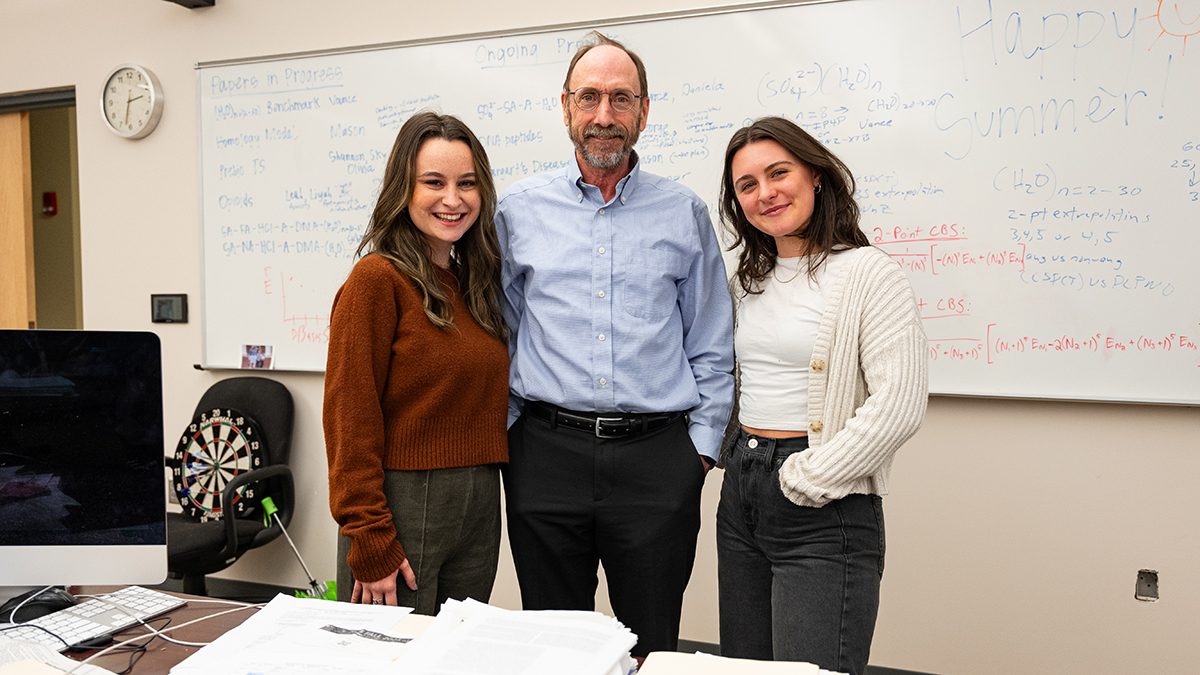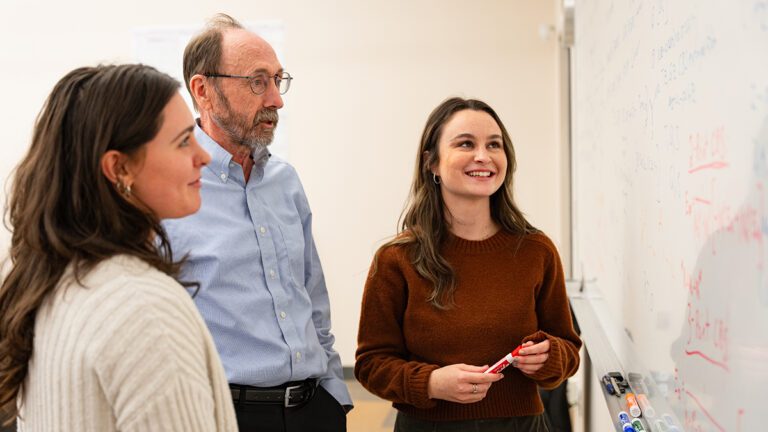Ancient water could have driven early protein formation on Earth

Long before dinosaurs, people and even microbes, Earth was hot with an atmosphere of trillions of gaseous molecules swirling around. Some of those molecules were water, while others were the building blocks of proteins, known as amino acids, which arrived on the planet from space. It’s still an open question, though, how those amino acids linked up to form the first peptides, small chains of amino acids necessary to form larger proteins.
In work published October 5 in the journal Physical Chemistry Chemical Physics, Furman University chemistry professor George Shields and two students, Shannon Harold ’22 M’23, and Sky Warf ’24, used computational chemistry to show that just six molecules of water could have sped up the chemical reactions that led to peptide formation in the Hadean world.
“This is a prediction that small peptides could have formed in the prebiotic atmosphere catalyzed by a handful of water molecules,” Shields said. Such an action would have begun a chemical cascade that led to life as we know it, with breathable air, drinkable water and life forms from plants to animals.

Sky Warf ’24, George Shields and Shannon Harold ’22 M’23.
Beyond uncovering information about the building blocks of life, the work has had an impact on the lives of both Harold and Warf. “It was so much fun, being able to write down all of the work and realize how much we had done, because computationally it just looks like a spreadsheet,” said Warf, who plans to pursue a chemistry doctorate next fall. Having her Furman undergraduate research experience under her belt, not to mention this publication, will only help.
“I’m hoping to make medical research a big part of my career, whereas that wasn’t really something on my mind before” doing research in the Shields lab, said Harold, who is currently a medical student at the University of South Carolina School of Medicine in Greenville. “The process of having ideas and being able to take the time to thoroughly think them through and come up with new ones—I know that I want to do that now. It was probably my favorite experience from college.”
The current study builds on a line of research initiated by Shields and Ariel Gale ’20, a Furman alumna who is now a graduate student at Emory University. Harold signed on to the project, then Warf, drawn to work with Shields based on their interactions in the classroom. They knew from previous work that it was possible to use powerful computers to model how two molecules of glycine, the smallest amino acid, could come together to make the peptide diglycine in the presence of just a few water molecules acting as a catalyst. Catalysts are molecules that take the starting ingredients of a chemical reaction, known as reactants, and orient them in a way that makes the products form faster. The catalysts in living organisms are called enzymes.
Here, Shields and the students wanted to understand whether it would have been possible to make triglycine, which is composed of three glycine molecules, in the gaseous atmosphere of early Earth. They started by using molecular graphics and quantum chemistry to build molecules, focusing on so-called “transition states,” the predicted intermediate molecules in chemical reactions. A chemical reaction, Shields explained, is a bit like getting over a hill, where the transition state molecule is at the top. Enzymes act to make the hill—that is, the energy needed for the reaction to get to the transition state—smaller.
Once the researchers created their predicted transition state molecules, they used the MERCURY supercomputer to determine whether or not the transition state models that they proposed could be part of a viable chemical reaction. After lots of trial and error, the team found the many transition states, which allowed them to try out the reaction with different amounts of water. They showed that just six water molecules could drive the chemical reaction to generate triglycine, suggesting that water likely catalyzed the formation of small peptides in the atmosphere of a young Earth.